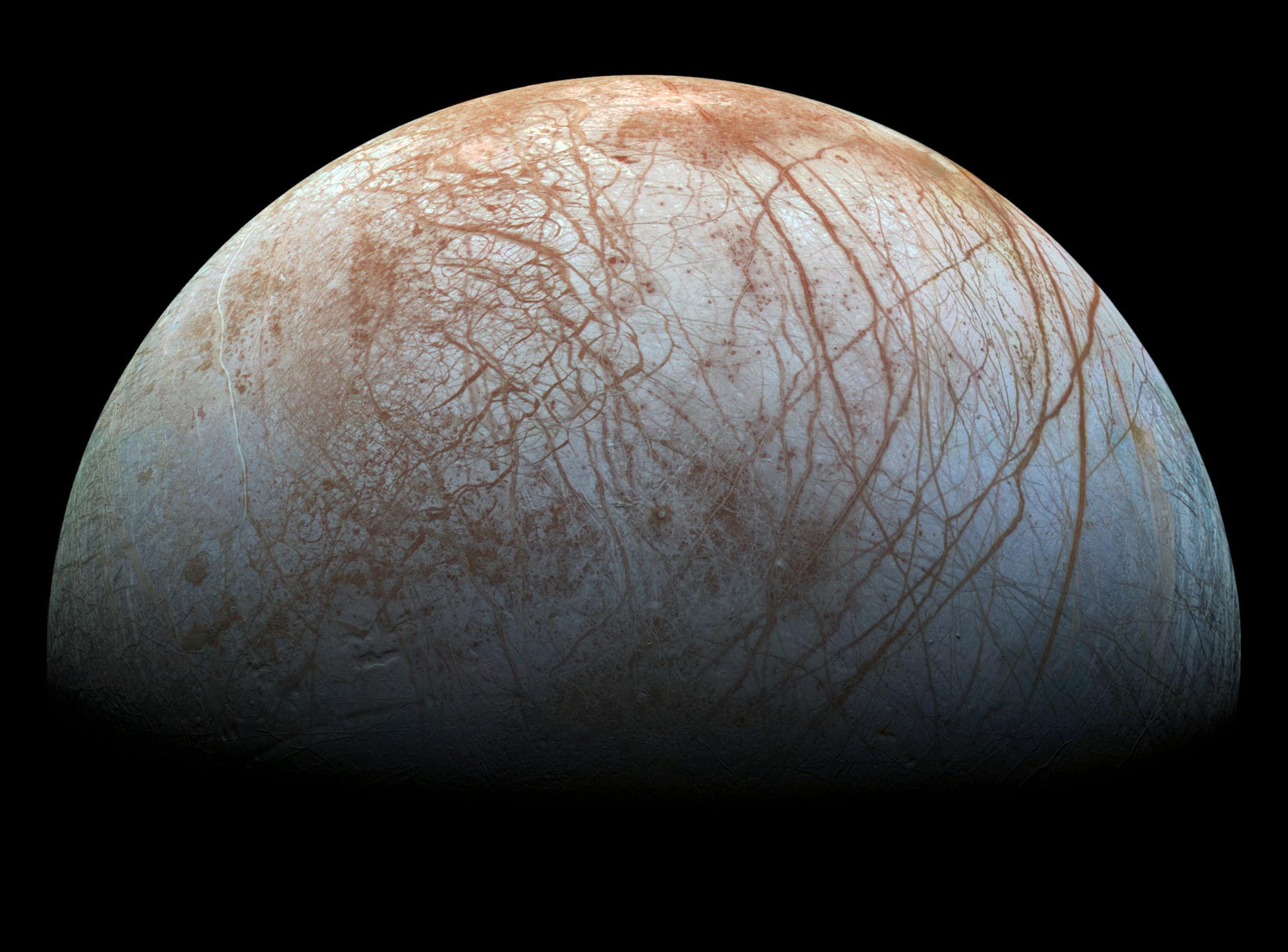Europa, the smallest of the four moons orbiting Jupiter, is one of the few worlds in the Solar System that could potentially have conditions suitable for life. Studies have shown that beneath its crust lies an ocean of liquid water. However, scientists haven’t been able to confirm if the ocean also has the chemicals needed for life — until now.

Using data from NASA’s James Webb Space Telescope, astronomers have identified carbon dioxide in a specific region on the icy surface of Europa. The data suggests this carbon could have originated in the subsurface ocean and wasn’t delivered by meteorites. Moreover, it was likely deposited on a geologically recent timescale.
“On Earth, life likes chemical diversity — the more diversity, the better. We’re carbon-based life. Understanding the chemistry of Europa’s ocean will help us determine whether it’s hostile to life as we know it, or if it might be a good place for life,” Geronimo Villanueva of NASA’s Goddard Space Flight Center said in a news release.
Webb of life
Villanueva and the team of researchers at NASA found carbon dioxide is most abundant in a region of Europa called Tara Regio, a geologically young area of resurfaced terrain known as chaos terrain. The surface ice was disrupted, and there was likely an exchange of material between the subsurface ocean and the icy surface.
Previous observations from the Hubble Space Telescope, Webb’s predecessor, showed evidence of ocean-derived salt in the Tara Regio region, Samantha Trumbo of Cornell University, one of the study authors, said in a news release. Now, the new data shows that CO2 is concentrated there too, which likely means carbon originated in the ocean.

The researchers used near-infrared observations by the Webb telescope to map CO2 distribution on Europa. Their findings were published in the journal Science alongside a second study that looked at the ratio of carbon isotopes on Europa. A high carbon-12 to carbon-13 ratio can indicate living processes, but the research was inconclusive in this respect.
Many open questions remain about life outside Earth
It’s not the first time carbon has been found outside Earth. In fact, the James Webb telescope last year found evidence of carbon on an exoplanet.
The new finding boosts the possibility of Europa having conditions suitable for life. Four of the six elements that occur in life on Earth have already been found on the icy moon: carbon, hydrogen, oxygen, and sulfur.
NASA will launch a spacecraft, Clipper, toward Europa in October 2024. It will make close flybys of the moon, hoping to establish if the ocean can support life. The journey will take six years, arriving in 2030. The European Space Agency is also working on the JUICE mission, which is expected to reach Jupiter in 2031, complementing Clipper.
“We don’t know yet if life is actually present in Europa’s ocean. But this new finding adds evidence to the case that Europa’s ocean would be a good bet for hosting extant life. That environment looks tantalising from the perspective of astrobiology,” Christopher Glein, study author and geochemist, told The Guardian.


